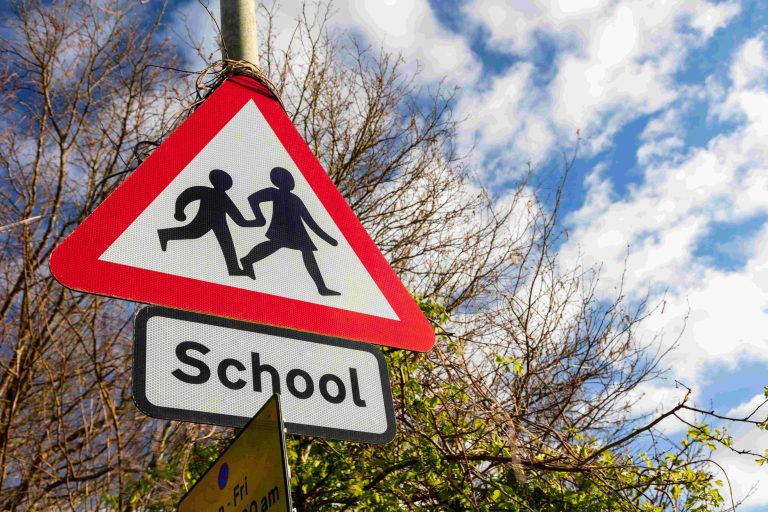Blog
Enhancing health and safety in schools | 8 strategies for ensuring continuous improvement
Written by Ross Henderson on 17 April 2024

In educational settings, ensuring the safety and wellbeing of students, staff, and visitors is a top priority. However, health and safety management isn’t a ‘one and done’ exercise – it’s a perpetual journey.
The goal is not just compliance but continuous improvement. Schools should aspire to be ‘best in class’ when it comes to safety standards, adopting proactive management approaches and constantly refining their practices to stay ahead of emerging risks and challenges. This will involve identifying gaps and improving culture, amongst other things.
To support your ongoing efforts, this blog shares eight strategies for continuously enhancing health and safety standards in schools.
1. Embed safety across all structures and departments
Safety encompasses various dimensions, including facilities management, statutory checks, lifecycle management, behavioural safety, and employee wellbeing. It’s essential to consider all of these elements and embed safety measures throughout all structures and departments within the school ecosystem.
By doing so, schools ensure that safety becomes an integral part of everyday operations, creating a robust foundation for continuous improvement in health and safety standards.
Do you need support?
Speak to us for an honest, no obligation chat on:
0345 226 8393 Lines are open 9am – 5pm
2. Lead from the top
Effective school safety management starts at the top. School leadership plays a pivotal role in setting the tone, fostering a culture of safety, and ensuring compliance with relevant legislation.
To drive continuous improvement in safety standards, school leadership must demonstrate a strong commitment to health and safety by allocating resources, setting clear objectives, and holding themselves and others accountable for safety outcomes.
Additionally, school leaders must:
- Ensure that staff receive adequate training and have access to necessary resources to implement and maintain safety practices effectively.
- Facilitate regular reviews and audits of safety protocols and practices to identify areas for improvement and ensure ongoing compliance with regulations and standards.
- Encourage innovation in safety practices by supporting initiatives that leverage technology and best practices.
- Be receptive to feedback and adaptable to changing circumstances or emerging risks.
- Lead by example by visibly prioritising safety in their actions and decisions, inspiring confidence and trust in the safety management process.
- Actively engage with all stakeholders to foster a collaborative approach to safety management.

3. Stay abreast of legislation
While forthcoming legislation may not directly impact schools, it’s important to be aware of active HSE campaigns, such as its current and ongoing focus on the duties required of schools to manage asbestos. It’s essential that schools built pre-2000 have a robust asbestos management plan in place and suitable training for responsible nominated persons.
Further, any updates or revisions to HR policies resulting from recent and upcoming changes in employment legislation (such as those concerning paternity pay and working hours) could potentially impact safety protocols.
It’s also important to be aware of broader acts such as the Building Safety Act 2022, which came into force on 1 April 2023 and could similarly influence safety measures. As it stands, the Act applies to high-risk premises, but experts believe its principles could be cascaded to other settings in the future. One change that could become relevant to schools is an increased emphasis on fire door checks and, if the school is in a multi-occupancy location, the requirement for coordination between responsible persons.
4. Implement the Plan-Do-Check-Act (PDCA) cycle
The PDCA cycle, a recognised principle for health and safety management, is a tried-and-tested approach that all schools should adopt, as it provides a framework for continuous improvement. Planning (‘Plan’) involves establishing systems and documentation, followed by implementation (‘Do’).
However, a system should never be classed as perfect and should always evolve, necessitating ongoing evaluation and adjustments (‘Check’). Regular monitoring is is crucial to continuous improvement as it helps to identify gaps and assess compliance. This can take the form of audits, inspections and impromptu checks.
It’s imperative that schools don’t treat these checks as ‘tick-box’ exercises and instead adopt a critical view. Crucially, schools must follow up on actionable findings and feed them back into the system to drive improvements (‘Act’).
If you need assistance in identifying areas where your school falls short and improving your current practices, working with an external consultant such as WorkNest can provide an independent perspective and offer valuable assurance.
5. Appoint competent persons
The appointment of competent persons is a legal requirement for employers. These individuals guide and advise on compliance with statutory provisions, offering crucial insights into safety management. They play a vital role in identifying gaps, contributing to policy development, and supporting continuous improvement efforts.
If there is nobody within your organisation with the necessary skills, experience and technical ability to take on this responsibility, the HSE advises that you can appoint an external consultant to assist you.
6. Establish reporting mechanisms
Reporting plays a critical role in the continuous improvement of health and safety practices within schools. It enables schools to track safety performance, identify areas for enhancement, and provide assurance to key stakeholders, including the Head/Principal and Trustees. The process of reporting safety performance can be achieved through various methods, ranging from traditional paper-based systems to modern digital platforms.
In recent years, many organisations, including schools, have transitioned or are transitioning to digital reporting systems such as SafetyNest. These digital solutions offer advantages such as real-time data collection, streamlined communication, and easier access to historical records for analysis and decision-making.
Whatever systems you use, an essential aspect of safety reporting is ensuring that the reporting trail is auditable. This means that information should be documented and traceable as it moves through different levels of the school hierarchy. While not every detail may be necessary for the CEO or Trustees to review, they should have access to summarised, pertinent information that allows them to understand the overall safety status and any notable trends or issues.

7. Be willing to adapt and evolve
‘We’ve always done it that way’ can be a dangerous sentiment when it comes to safety management.
Safety management systems should be dynamic and adaptable to changing circumstances and emerging risks. It’s essential to continuously evaluate and refine safety protocols based on feedback, new information, and evolving best practices, including keeping abreast of:
- Regulatory updates/focuses
- Industry standards
- Accident statistics
- Guidance documents
This is key to establishing a culture of continuous improvement and ensuring that safety measures remain effective and relevant.
8. Continue to cultivate your safety culture
Ultimately, the effectiveness of any safety management system hinges on the prevailing organisational culture. Compliance alone will not protect people from harm; a positive safety culture must be ingrained at every level.
A safety culture is built over time through consistent reinforcement of safety values, behaviours, and practices. Core facets include:
- Clear policies and procedures to ensure that safety expectations and protocols are understood and followed by all.
- Well-defined roles and responsibilities to provide clarity over who is accountable for specific safety measures, promoting accountability and ownership.
- Comprehensive training to equip staff with the knowledge and skills needed to prioritise safety in their daily activities.
- Visible leadership to demonstrate a commitment to safety from the top down, inspiring confidence and trust in the safety management process.
- Recognising and rewarding good safety practices to reinforce desired behaviours and encourage a positive safety mindset among staff and students.
- Learning from incidents through thorough investigations and analysis to promote a culture of continuous learning and improvement.
In cultivating a robust safety culture, it’s crucial to emphasise the shared responsibility of everyone in the organisation. Everyone has a role to play in upholding safety standards, reinforcing values and behaviours, and identifying and addressing safety issues. In this way, as your culture develops, so too will the effectiveness of your safety management system, making it perhaps the most essential component of continuous health and safety improvement in schools.
Related Content

BLOG
Responding to the RAAC Concrete Crisis | Safety Measures for Schools and Other Sectors
Specialist safety support for schools
Keen to improve health and safety across your school but not sure where to start? Perhaps you lack the time and expertise to take on this task yourself?
WorkNest helps schools adopt a proactive approach to safety management and continually develop their safety practices. As part of our fixed-fee support, we assigned named specialists to assist you on your safety journey, including conducting a focused assessment of your current practices and working with you to implement sensible, proportionate safety solutions. We’ll even act as one of your legally required competent persons.
For more information, contact our team today on 0345 226 8393 or request your free consultation using the button below.











